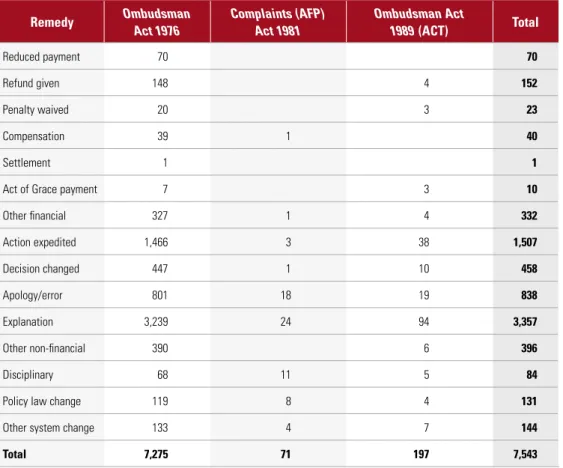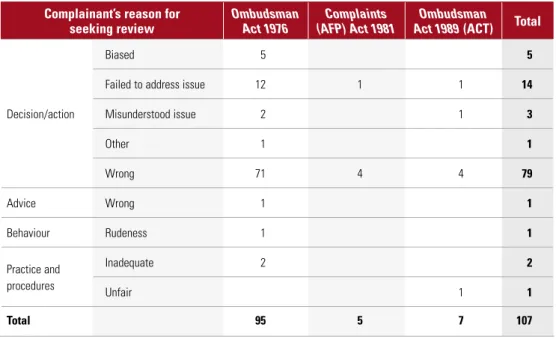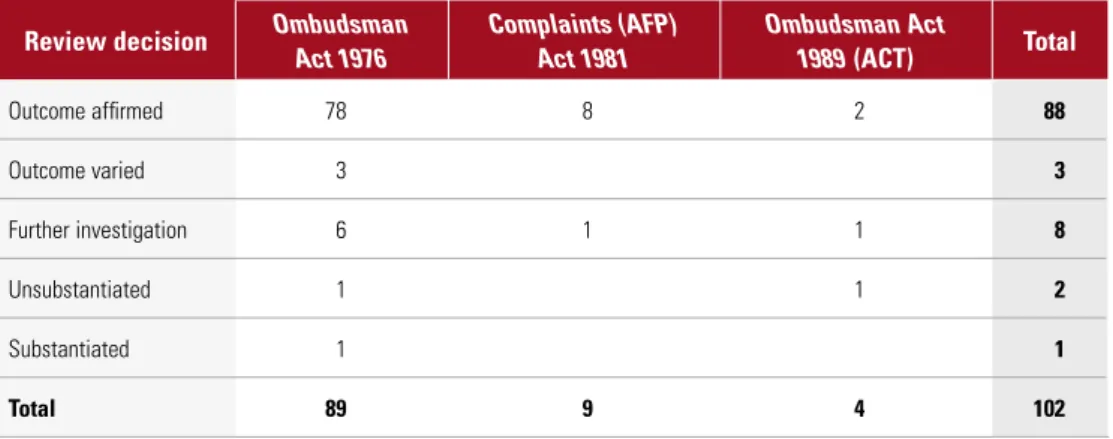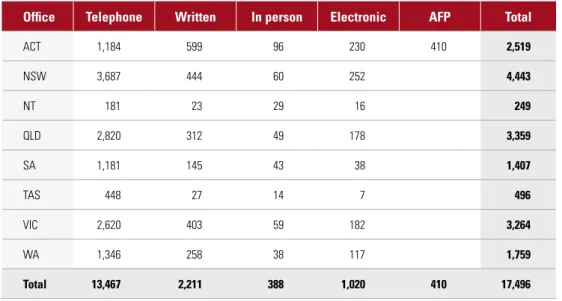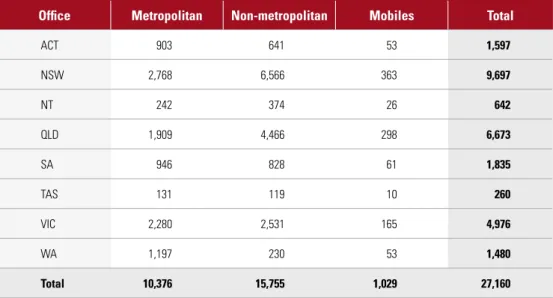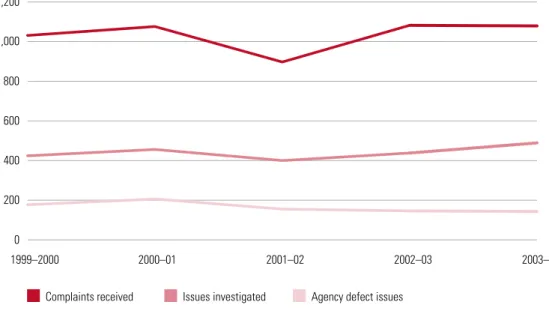A key role of the Ombudsman is to handle complaints about the AFP, both at the national level. An issue raised in public debate was the role of the Ombudsman in this regard. The Ombudsman submits to the Legislative Assembly of AKT an annual report on the performance of the function of the Ombudsman.
Details of the Commonwealth Ombudsman's achievement of the outcome and outputs are in the performance report chapter.
PROVISION OF A COMPLAINT MANAGEMENT
Full details of the total cost of agency output from the Office of the Ombudsman are set out in note 20 of the annual accounts. In 2003-04, the Office received 107 review requests, a 23% decrease on the number of similar requests received last year. Of the six remaining reviews, one complaint was found to be substantiated and corrective action was taken, two were found to be unsubstantiated, and in three reviews the office agreed to change its decision on the original complaint.
This was particularly the case with complaints about the police and reflected the AFP's continued commitment to mediating less serious cases.
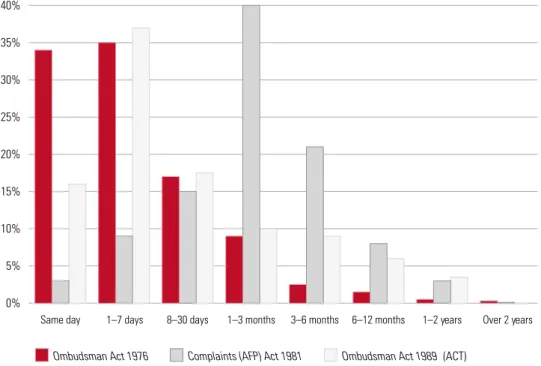
Complaints received Performance indicator number of complaints
On average, 58% of calls were from regional areas of Australia, 38% from within metropolitan areas and the remaining 4% from mobile phones. The total number of complaints to the Department of Immigration and Multicultural and Indigenous Affairs fell by 23% compared to the previous year. Charts comparing complaint trends over the past five years for those agencies against which the most complaints were made to the Ombudsman are included in Chapter 5.
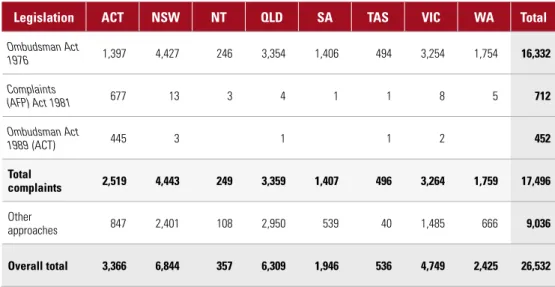
Complaints finalised Performance indicator Number of complaint
Complaints investigated Performance indicator Number of complaint
Following an established trend, the majority of complaint issues finalized this year by the Ombudsman's office under the Ombudsman Act 1976 related to the correctness or propriety of a decision or action of an agency. Of the complaint issues finalized this year, 41% arose from the conduct of AFP members, including complaints about attitude, assault and incivility. For example, the Ombudsman may refuse to investigate if a case is more than 12 months old; if the complainant does not have a sufficient interest in the subject of the complaint; if a complainant does not have it.
This increased backlog can generally be attributed to the complexity of the complaints and the correspondingly longer time required to investigate those complaints.
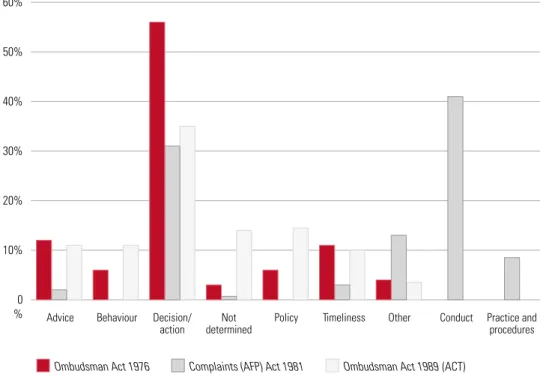
PROVISION OF ADVICE TO GOVERNMENT TO IMPROVE PUBLIC
In a practical sense, the most important of these powers is the freedom to decide not to investigate until the complainant has first raised the complaint with the agency. The rationale for deciding not to investigate is that the issues in dispute must first be raised and clarified at the source of the problem. In this way, the issues raised in the complaints addressed to the People's Advocate were handled.
Improvements to government administration and
Formal recommendations arising from investigations
Feedback on auditing and monitoring activities
Audits of telecommunications intercept records
The reports concluded that the agencies generally meet the requirements of the VTI Act. These inspections remain a core element of the work of the Ombudsman's law enforcement team. The inspection methodology used and the resources required are regularly reviewed to ensure that the accountability role of the firm is met.
Inspection of controlled operations records
The Commonwealth Ombudsman is one of the few national ombudsmen established in a federal system of government. At the same time, there are advantages to be gained from the rural character of the office. However, it is likely that the remaining areas of jurisdiction over Australia Post will remain within the office of the Commonwealth Ombudsman.
We continued to receive complaints arising from the ATO's handling of mass marketed schemes (114 in 2003–04 compared to 112 in the previous year).
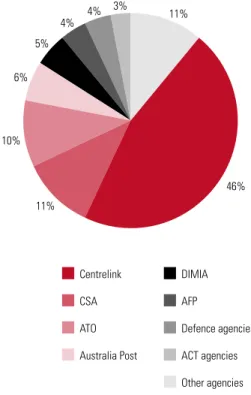
40 41 ‘… the model places an onus on
Ombudsman Objectives
The Office of the Commonwealth Ombudsman seeks to provide a cost-effective form of independent administrative review that is timely, informal and does not impose direct costs on individuals. Coverage is extensive and includes almost all administrative activity in Commonwealth departments and agencies. Through handling complaints and conducting its own investigations, the office contributes to continuous improvement in the performance of agencies and their accountability to government, parliament and society.
Departmental activities involve the use of assets, liabilities, income and expenses that are controlled or incurred by the Office in its own right. Minister of Finance Orders (or FMOs, being the Financial Management and Accountability Orders (Financial Statements for reporting periods ending on or after 30 June 2004) Orders);. Assets and liabilities are recognized in the Ombudsman's Statement of Financial Position when and only when it is probable that future economic benefits will flow and the amounts of the assets or liabilities can be reliably measured.
Liabilities and assets that are not recognized are reported in the Schedule of Liabilities and the Schedule of Contingencies. Income and expenditure are recognized in the Ombudsman's statement of financial performance when and only when the flow or consumption or loss of economic benefits has occurred and can be reliably measured. The continued existence of the Ombudsman in its current form, and with its current programmes, is dependent on government policy and legislation and on continued appropriations by Parliament for the Ombudsman's administration and programmes.
The People's Advocate had no revenues, expenses, assets, liabilities or cash flows administered in the year ended June 30, 2004 or in the comparative financial year. In the Orders of the Minister of Finance, an impairment test was introduced for long-term assets which were held at cost and were not subject to AAS 10 Recoverable Amount of long-term assets.
Summary of Significant Accounting Policies (Cont’d) 2.3 Revenue
Summary of Significant Accounting Policies (Cont’d) 2.4 Transactions with the Government as Owner
Summary of Significant Accounting Policies (Cont’d) 2.5 Employee Benefits (Cont’d)
Summary of Significant Accounting Policies (Cont’d) 2.6 Leases (Cont’d)
Summary of Significant Accounting Policies (Cont’d) 2.10 Property, Plant and Equipment (Cont’d)
- Intangibles
Depreciation rates (useful lives) and methods are reviewed at each reporting date and any necessary adjustments are incorporated into the current or current and future reporting periods, as applicable. The total amount of depreciation allocated to each asset class during the reporting period is disclosed in Note 6C. The Ombudsman is exempt from all forms of tax, with the exception of Benefits Tax and Goods and Services Tax (GST).
Except where the amount of GST incurred is not recoverable from the Australian Taxation Office;. All borrowing costs are expensed as incurred, except to the extent that they are directly attributable to qualifying assets, in which case they are capitalized. Comparative figures have been adjusted to adjust for changes in presentation in these financial statements where necessary.
Summary of Significant Accounting Policies (Cont’d) 2.16 Reporting of Administered Activities
Adoption of AASB Equivalents to International Financial Standards from 2005-2006
Adoption of AASB Equivalents to International Financial Standards from 2005-2006 (Cont’d) Management of the transition to AASB Equivalents to IFRSs
Adoption of AASB Equivalents to International Financial Standards from 2005-2006 (Cont’d) Property plant and equipment
Events Occurring after Balance Date No significant events occurred after balance date
The independent revaluations in 2002 were completed by an independent valuer, Hyman Valuations Pty Limited, for all tangible non-financial assets with a carrying value in excess of $20,000. The Ombudsman's revaluations were completed by the Commonwealth Ombudsman for all other tangible non-financial assets. -financial assets exported. No remission of amounts due to the Commonwealth has been made in terms of subsection 34(1) of the Financial Management and Accountability Act 1997.
Commonwealth Ombudsman Annual Report FINANCIAL STATEMENTS OFFICE OF THE COMMONWEALTH OMBUDSMAN NOTES TO THE FINANCIAL STATEMENTS FOR THE YEAR ENDED 30 June Note 18 - Financial Instruments Notes 18A Financial Contributions Information and methods (including recognition criteria and measurement basis) Nature of underlying instrument (including significant terms and conditions affecting the amount, timing and certainty of cash flows) Financial assets Financial assets are recognized when control over future economic benefits is established and the amount of the benefit can be measured reliably. Money in the Ombudsman's bank accounts is deposited into the official public account every night and interest is earned on the daily balance at rates based on money market call rates. Receivables for goods and services 8BThese receivables are recognized at the nominal amounts of the obligations less any provision for bad and doubtful debts.
Provision is made when collection of the debt is considered less likely than more likely. Commonwealth Ombudsman Annual Report FINANCIAL STATEMENTS OFFICE OF THE COMMONWEALTH OMBUDSMAN NOTES TO AND FORM PART OF THE FINANCIAL STATEMENTS FOR THE YEAR ENDED 30 June Note 18 Financial Instruments (continued) Note 18A - Terms, Conditions and Accounting Policies Notes (Accounting Policies and Accounting Policies) Methods (including recognition criteria and measurement basis) Nature of underlying instrument (including significant terms and conditions affecting the amount, timing and certainty of cash flows) Financial liabilities Financial liabilities are recognized when a present obligation is entered into with another party and the amount of the liability can be reliably measured. Liabilities are recognized to the extent that the goods or services have been received (and regardless of whether they have been invoiced).
The net fair value of cash and non-interest-bearing monetary financial assets approximates their carrying amount. The Ombudsman's maximum exposure to credit risk as of the reporting date in respect of each class of recognized financial assets is the carrying amount of those assets as indicated in the statement of financial performance.
Appropriations
Appropriations (cont.)
Reporting of Outcomes A – Net Cost of Outcome Delivery
2003, Dispute Resolution Mechanisms in Complex Industries, paper presented at the Alternative Dispute Resolution Advisory Council Conference, Sydney. 2003, How Can the Ombudsman Make a Difference?, paper presented at the Annual Meeting of the Australian Institute of Administrative Law (Qld), Brisbane. 2003, Future Directions for Australian Administrative Law - Ombudsman, paper presented at the National Administrative Law Forum hosted by the Australian Institute of Administrative Law, Canberra.
2003, Judicial Review of the Work of Administrative Tribunals—how much is too much?, Paper presented to the ACT Chapter of the Council of Australasian Tribunals, Canberra. 2004, Keynote address, paper delivered to the National Ombudsman Commission of Indonesia conferences on the Ombudsman, Medan and Yogyakarta, Indonesia. 2004, Problem Areas in Administrative Law, paper presented to an Australian Public Service Commission seminar, Sydney and Melbourne.
2004, Reflections—From Academia to Practitioner, paper presented to an Australian Public Service Commission seminar, Sydney. 2003–04, various presentations on administrative law, the Ombudsman and complaints handling at seminars and classes organized by the Australian National University Faculty of Law, University of Tasmania Faculty of Law, Australian Human Resources Institute, Center for Democratic Institutions, Spark Helmore, Australian Federal Police, Centrelink, department of finance and administration, and department of immigration and multicultural and indigenous affairs. 2003, paper presented to Certificate IV in Government (Fraud Control Investigation Program) courses offered by the ATO and KPS and Associates, Sydney (and in Canberra in 2004).
2004, Towards Community Ownership of the Tax System: The Taxation Ombudsman's Perspective, keynote speech paper presented at the ATAX 6th International Conference, Sydney. 2003, The Role of Mediation in Complaints Handling, paper presented at LEADR Annual General Meeting, Melbourne.
